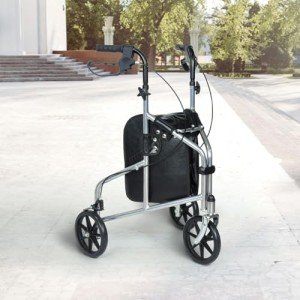Walking Aids: Enhancing Mobility and Independence
Walking aids are important tools designed to help individuals with mobility difficulties, allowing them to move freely and easily. These gadgets can significantly boost autonomy, improve posture, lower the danger of falls, and boost total lifestyle. This article delves into various types of walking aids, their benefits, considerations for use, and pointers for selecting the best aid. Furthermore, a comprehensive FAQ section addresses common questions about walking aids.

Kinds Of Walking Aids
Walking aids can be found in different kinds to deal with various requirements and preferences. Below is a categorized list of the most typically used walking aids:
1. Canes
- Basic Canes: A single straight walking stick for standard support.
- Quad Canes: Canes with a four-pronged base for increased stability.
2. Walkers
- Standard Walkers: Frame-like devices that supply assistance on all sides, terrific for those with restricted strength.
- Rolling Walkers (Rollators): Equipped with wheels, these allow users to stroll with less effort and feature seats for resting.
3. Crutches
- Axillary Crutches: Used under the arms; appropriate for temporary Mobility Aid issues.
- Forearm Crutches (Lofstrand Crutches): Designed for long-lasting use, they require grip strength and are lighter than axillary crutches.
4. Wheelchairs
- Manual Wheelchairs: Require user effort to move, providing flexibility and independence.
- Folding Electric Walker Scooter for Smooth Mobility Wheelchairs: Battery-powered alternatives ideal for users with limited arm strength.
Benefits of Walking Aids
Walking aids provide numerous benefits that add to improved mobility, safety, and self-reliance. Some crucial benefits include:
- Increased Stability: Walking aids provide additional points of contact with the ground, decreasing the danger of falls.
- Boosted Mobility: They make it possible for movement over higher distances, permitting people to take part in social activities and everyday jobs.
- Pain Reduction: Properly fitted walking aids can alleviate pressure on joints and decrease pain connected with different medical conditions.
- Enhanced Confidence: Using a walking aid can boost an individual's confidence, motivating them to explore their environment without worry.
- Posture Support: Aids assist preserve appropriate alignment and posture, minimizing stress on the back and hips.
Considerations When Choosing Walking Aids
Selecting the best walking aid is essential for safety and efficiency. Here are some aspects to think about:
1. Individual Needs
- Assess the level of help needed for mobility.
- Think about whether momentary or long-term assistance is essential.
2. Environment
- Evaluate the terrain and surface areas (indoor vs. outdoor) where the aid will be used.
- Guarantee that the walking aid appropriates for stairs, ramps, or irregular surface areas.
3. Weight and Portability
- Assess the weight of the walking aid and if it can be transported quickly.
- Days Lightweight Folding Walker with Seat – Easy Mobility options are preferable for those who may require to lift or stow the aid often.
4. Comfort and Fit
- Make sure the walking aid is adjustable and fits the user's height.
- Consider grips, armrests, or seats that supply convenience for extended use.
5. Budget plan
- Figure out a budget for the walking aid while considering the quality and features needed for the user's safety and comfort.
FAQs About Walking Aids
1. Who should use walking aids?
Walking aids are ideal for individuals recuperating from surgery, those with persistent discomfort, seniors experiencing balance problems, or anybody with a mobility obstacle.
2. How do I select the best height for a walking aid?
When standing straight with great posture, the top of the cane or walker must align with the wrist bone. A health care professional can provide assistance during fitting.
3. Can I use a walker on stairs?
While it's usually not safe to use a walker on stairs, some walkers are developed particularly for stairs with features that boost stability. Constantly seek advice from a physical therapist for customized advice.
4. How can I keep my walking aid?
Routinely inspect for loose parts, wear and tear, and clean the device according to the manufacturer's directions to ensure safety and durability.
5. Do walking aids help with balance?
Yes, walking aids can offer the required assistance and stability, helping to prevent falls and assist with balanced motion.
Walking aids are vital gadgets that empower people with Days Deluxe Lightweight 4-Wheel Rollator - Easy Mobility challenges to keep independence and improve their quality of life. By understanding the various kinds of walking aids, their benefits, and necessary considerations for choice, users can make educated choices tailored to their requirements. Whether for momentary support or long-term use, the ideal walking aid can transform everyday routines and enhance general wellness.
| Type of Walking Aid | Functions | Best For |
|---|---|---|
| Walking canes | Single or quad bases | Moderate assistance |
| Walkers | Repaired or rolling options | Lower body weak point |
| Crutches | Axillary or forearm designs | Short-term mobility concerns |
| Wheelchairs | Handbook and electric options | Extreme mobility restrictions |
Embracing the best walking aid can cause newfound flexibility and a more active way of life, promoting self-reliance and social engagement. As constantly, assessments with health care professionals can offer tailored recommendations to ensure safety and effectiveness in utilizing walking aids.
